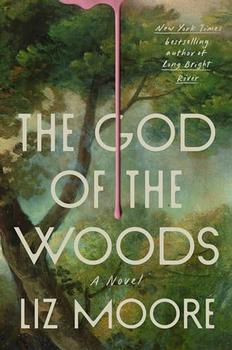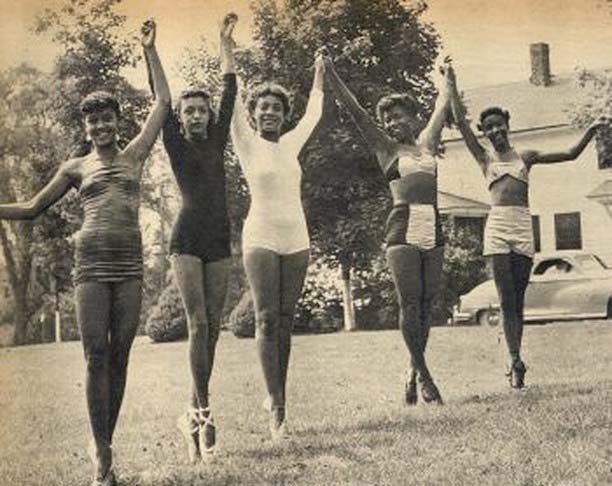Summary | Excerpt | Reviews | Beyond the Book | Read-Alikes | Genres & Themes | Author Bio

A Novel
by Liz MooreThis article relates to The God of the Woods
Liz Moore's mystery The God of the Woods begins with the disappearance of a girl from fictional Camp Emerson, a summer camp for children in the Adirondack Mountains of New York.
For many children, attending summer camp is a rite of passage. According to a 2023 Newsweek article, there are over 12,000 summer camps across the United States, and some 20 million children—around 40 percent of children ages 6 to 18—attend at least one camp annually. Hundreds of different kinds of experiences are available now, with some catering to outdoor activities, some to arts and crafts, others to learning about potential careers such as robotics or computer programming.
Most historians believe the first summer camp in the United States was established at the end of the Civil War. Educator and abolitionist Frederick Gunn ran a boarding school in Washington, Connecticut, and in 1861 he decided to take his pupils on a character-building field trip of sorts. He marched about 40 students to a beach on Long Island Sound (a mere 42 miles away) where the children set up camp. The next ten days were devoted to fishing, foraging, and trapping, and the children also participated in military drills (the belief being they'd eventually serve in the Union Army). The venture was such a success that it became a tradition for the next 15 years and inspired numerous copycats during the following decades.
At first, camps were private and geared toward the children of wealthier parents. Middle-class and lower-class parents often couldn't afford the fees, and poorer families frequently depended on their children's labor year-round. One of the first private camps, The North Mountain School of Physical Culture in Pennsylvania, charged $200 for a four-month stay (close to $6000 in today's dollars). According to the American Camp Association website, its purpose was to take "weakly boys out into camp life in the woods...so that the pursuit of health could be combined with the practical knowledge outside usual academic lines." Another early camp, Camp Chocorua (founded in New Hampshire in 1881) taught their charges to rough it by mandating that they leave their servants at home.
Summer camps began to change around the turn of the century as a result of increased industrialization. More families were drawn to cities for work, and religious and community leaders became concerned about the lack of outdoor opportunities for children in an urban environment. They feared that boys in particular would become idle and morally corrupt if left to their own devices for a whole summer. Added to that worry was the common belief that too much indoor time was "feminizing," and for boys to develop into strong men, time in the outdoors was essential. Low-cost camps and those sponsored by civic and religious organizations began springing up across the country to provide boys with the opportunity to connect with nature. Most focused on swimming, rowing, shooting and hunting, and developing leadership skills.
Girls' camps became popular around World War I. These were less about spending time outdoors and more about teaching homemaking skills such as cooking, sewing, and how to be a good mother. They were also formed to counter the "New Woman" or "Flapper" culture, where women wore short skirts, smoked cigarettes, and flaunted their sexuality. Interestingly, this programming failed in many cases; girls away from home for the first time often came back feeling newly independent, much to the chagrin of their parents.
 The camps were segregated not only by sex but by race. The first camp for Black youth was Camp Atwater, established in 1921 in Massachusetts. Camps focused specifically on religious identities began to appear as well. There were even political camps, such as Camp Kinderland in Massachusetts, opened in 1923 and devoted to teaching children about socialism.
The camps were segregated not only by sex but by race. The first camp for Black youth was Camp Atwater, established in 1921 in Massachusetts. Camps focused specifically on religious identities began to appear as well. There were even political camps, such as Camp Kinderland in Massachusetts, opened in 1923 and devoted to teaching children about socialism.
The focus of the camp experience shifted dramatically after World War II. Before, the camp's purpose was mainly to prepare the child for adulthood. After witnessing the traumas of war, however, more people began to look at childhood as a time of innocence, and to feel children should be allowed to enjoy this brief period in their lives as fully as possible. As a result, camps increasingly steered toward providing fun activities for children and away from character-building.
Today, the summer camp experience can vary greatly. Many do provide overnight stays (lasting anywhere from a weekend to months), but more recently there's been a trend toward day camps, where a child spends each night at home in their own bed. There are even summer camps for adults, which offer the same experiences some may be nostalgic for (swimming, campfires, and sing-a-longs)—but, unlike kids' camps, they generally allow copious amounts of alcohol.
Camp Atwater Ballet Group, 1951, courtesy of BlackPast.org
Filed under Places, Cultures & Identities
![]() This "beyond the book article" relates to The God of the Woods. It originally ran in July 2024 and has been updated for the
July 2024 edition.
Go to magazine.
This "beyond the book article" relates to The God of the Woods. It originally ran in July 2024 and has been updated for the
July 2024 edition.
Go to magazine.
Great literature cannot grow from a neglected or impoverished soil...
Click Here to find out who said this, as well as discovering other famous literary quotes!
Your guide toexceptional books
BookBrowse seeks out and recommends the best in contemporary fiction and nonfiction—books that not only engage and entertain but also deepen our understanding of ourselves and the world around us.